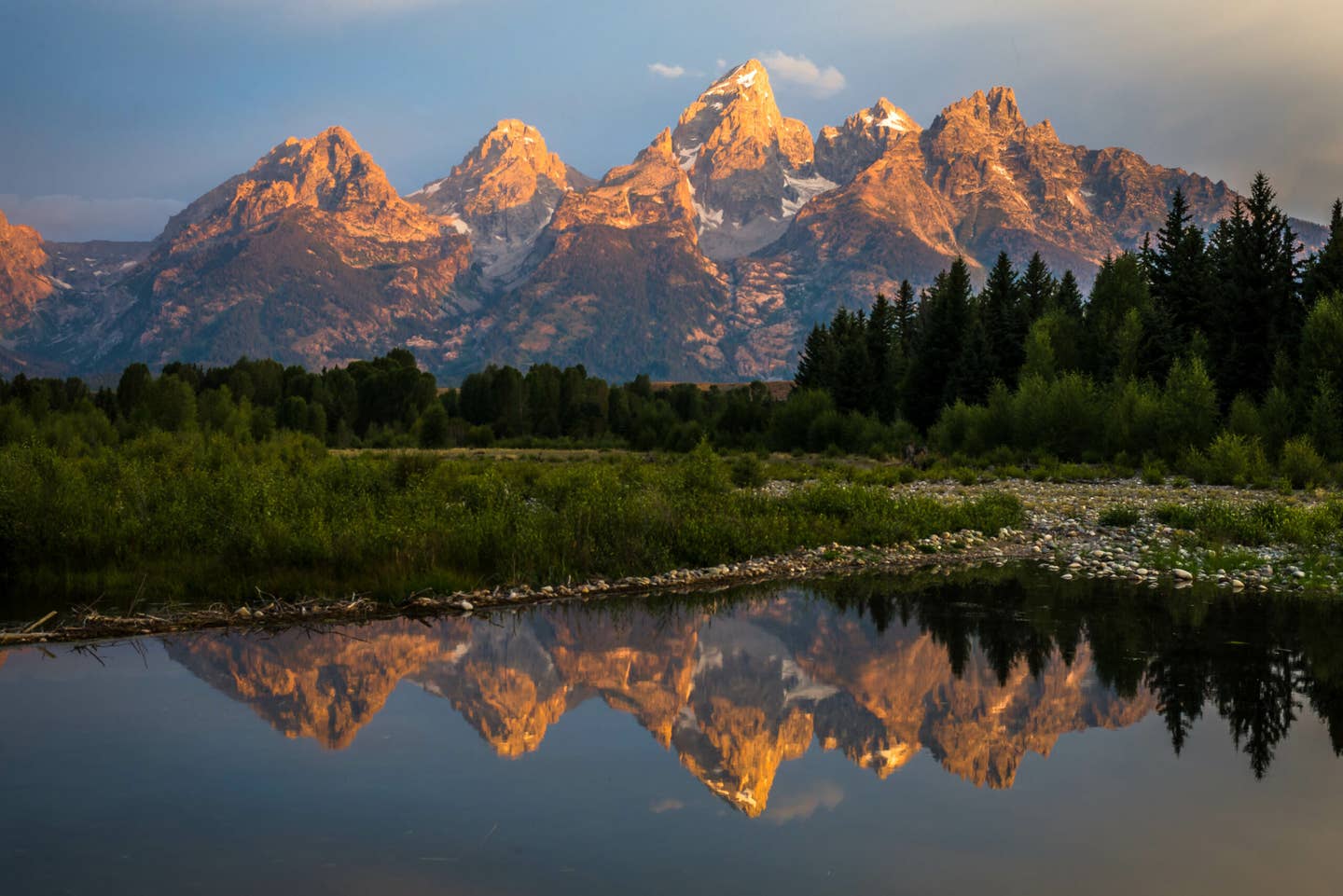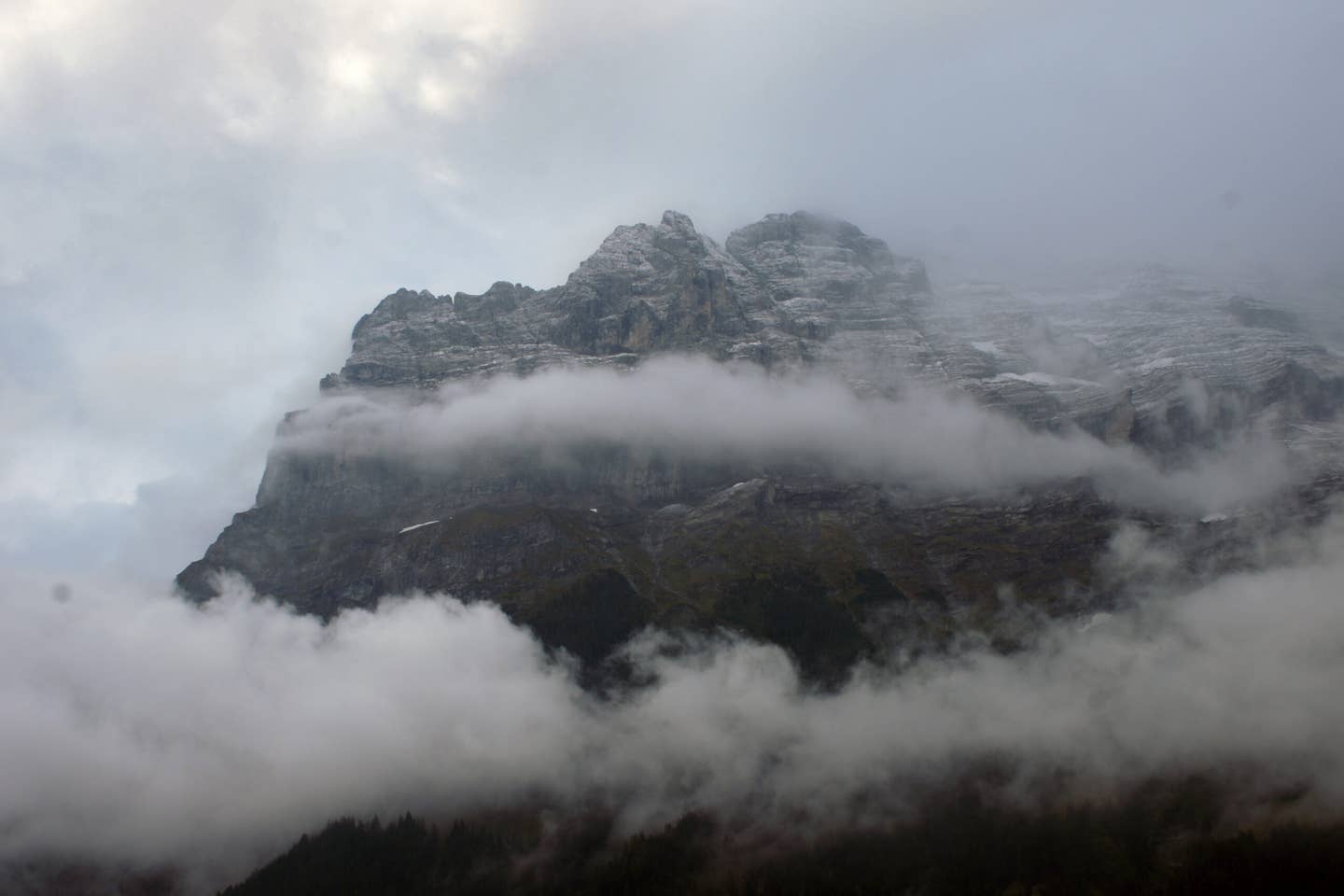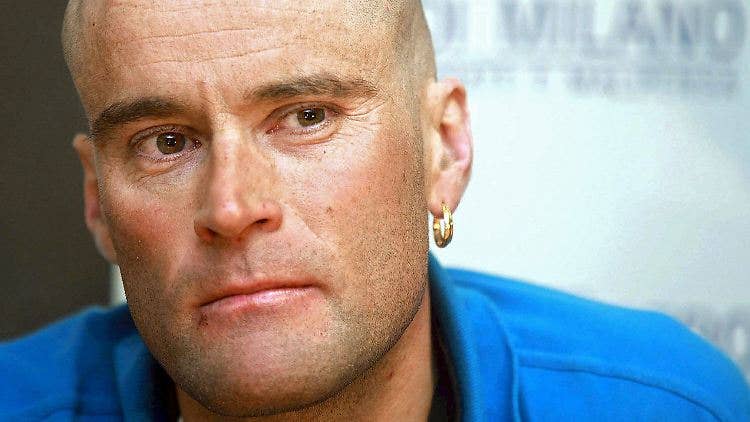

IPOS: Lost Trail
Popular Stories
We're up before the sunrise and the sky is a dark indigo with stars starting to disappear from the slowly creeping sun. When we crest the Idaho/Montana border we get our first glimpse of the resort from the highway. It's perched right on the Continental Divide and looks like a homely little ski lodge. To our surprise, the parking lot is filled with a decent amount of cars. They range from trucks with campers to van build-outs of all shapes and sizes to remodeled school buses that feel plucked right from Instagram. Many of the owners are still asleep in their mobile homes, while others are getting ready for work. This is the closest thing to "lodging" that the resort offers. While it might be spartan, it does the job. As long as you don't mind the cold and your van is well insulated, that is.
As we meander through the parking lot we're intercepted by the marketing manager RJ Higgins Jr. He's in the process of waking up the mountain, and we tag along. First up on his to-do list is to turn on the power, and he grabs some logs from the woodpile and tosses them into the wood stove. With the stove roaring, he heads over to the generator and flips a large switch. Suddenly the main lodge flickers to life. Lost Trail doesn't have power lines feeding it electricity, nor does it have Wi-Fi or good cell service. The mountain is powered through a system of generators and is truly off the grid. Some would find that burdensome, but owners Scott and Judy Grasser see it as part of Lost Trail's charm. The point is to ski after all, not be on your phone. Plus, the skiing in these parts is so good that it's worth being detached from the "real world" for a little while.
First light on Lost Trail. Katie Lozancich photo.
Lost Trail was first established in 1938—though folks have been traveling through these parts for centuries. Indigenous people, miners, and trappers used the steep mountain pass long before a ski resort was drawing travelers in. The Lewis & Clark expedition even tried to cross through these parts but got hopelessly lost—hence the name "Lost Trail." Fast forward to 1967 and Bill Grasser—Scott and Judy's dad—bought the resort with a partner. In 1973, he took over full ownership and added a ski lodge, dining area, and the mountain's first chairlift. Lost Trail has been in the Grasser family ever since. It's been a small family operation for the last 80 years, and it doesn't plan to change anytime soon.
One of the characters I meet is Anthony "Tony" Napolitano. He's a goofball, and is sporting his finest spring skiing attire: aviators with a visor under his helmet—but he still brought his goggles just in case. I didn't think he was going to take our interview very seriously considering he kept interrupting his friend's interviews. But the second I turn the camera on him, his tone shifts completely. His goofy and charismatic demeanor is replaced with an air of seriousness and gratitude. At some points, he struggles to find the words to communicate what this mountain means to him and is close to tears. "I started coming to Lost Trail when my two sons were eight and 10, and I was a single parent raising two boys. It was affordable for us to come up here." The affordability is what first brought them up here, and they stayed because they started to feel like part of the Lost Trail family. Ever since, he's been looking for ways to help the Grasser family. He points to the nearby wooden ski racks scattered around the base of the lodge. "They let me put those racks up and make some renovations for the lodge, and they let you feel like you're part of something wonderful," he reflects. Some years he's even helped trimmed runs in exchange for season passes for his family. "The Grassers will find a way to get you here, and enough can't go to Bill Grasser because if it wasn't for him Lost Trail wouldn't be the way that it is." he said. "Now if I go any further about that subject I'm going to start crying and I don't have anything to wipe my tears right now," he said with his joyful demeanor returning.
Siblings Scott and Judy Grasser at the helm of Lost Trail. Katie Lozancich photo.
Their goal has always been to offer great snow, affordable skiing, and create a family-friendly atmosphere for nearby Idaho and Montana communities. While the Grassers have always worked towards that goal, they're able to achieve it with the help of the many locals who frequent the resort. Higgins starts introducing me to a handful of local characters who sing Lost Trail's praises. Many of them display their LT ticket stubs proudly on their jackets like ornaments on a Christmas tree. The resort uses old-school sticker lift tickets. It's easy to spot a diehard LT skier/snowboarder because their jacket is bursting with five or six tickets in an array of colors.
Tony is one of the main Lost Trail locals who considers Lost Trail home. Katie Lozancich photo.
Sign Up For Our Newsletter
We hear a lot of these stories while we're visiting, which goes to show how involved the community is with the resort. The ski patrol is another example of this dedication because it's largely composed of volunteers. The majority of the patrollers here have day jobs elsewhere and spend their weekends volunteering on the slopes for free. Why? They love it, and they're constantly scheming all kinds of ways to raise funds to keep the patrol team going. Their most popular fundraiser is the Lost Trail Steak Fry. It raises money for first aid supplies and training, and the patrollers dish out some tasty-looking steaks. The locals are all about it.
After our meet and greet session we grab our skis and head up the mountain. I hitch a ride on Chair One and creep up the mountain on a tiny black two-seater that's steadily chugging along. From here I can see all kinds of fun features and pockets of trees. You don't need much imagination to see why this place would be fun during one of their iconic cold-smoke powder days. There are all kinds of lines and little nooks and crannies to explore in Lost Trail's 1,800 acres of terrain. Today, however, is a bluebird spring day, which treats us to a bounty of sunshine and corn. At the top of Chair One, there's even a collection of impressive snow sculptures that greets me as I near the end of my ride. There's an assortment of mermaids, sharks, and even a regal Poseidon on display and it's easy to see why kids love it here so much.
At Lost Trail, it's important to start them young! Katie Lozancich photo.
Speaking of kids, our guides for the afternoon are the Lost Trail freeride ski team. They know the mountain like the back of their hand and take us to the terrain park to show off all their favorite moves. The mountain is so easy to navigate that it's not unusual to see packs of children shredding together without their chaperones. Shortly after we hop back on the chair and traverse across the mountain to reach the iconic Chair Four. No visit to Lost Trail is complete without riding Chair Four. It's the resort's Shangri-La. There are even prayer flags and prayer wheels adorning the lift shack, paying homage to this little slice of heaven on earth. When it was added, Chair Four finally gave the resort access to its Montana peak which tops out at an elevation of 8,200 feet. From here the world opens up, with unbridged views of both Montana and Idaho. Not only is the view unparalleled, but the skiing is the best-advanced terrain you can find at the resort—especially in the avalanche-controlled bowl known as "The White House." Whichever route you choose to take down the mountain, the 1,800-foot journey to the base will be sure to leave a lasting impression. At least it did for us.
We finished off the day with some pitchers of local beer from a brewery in nearby Hamilton, Montana while soaking up the late afternoon sun on the main deck area. Joining us are the Grasser family, LT employees, and a bunch of locals. It feels like we're hanging out at a family BBQ with a bunch of old friends, and it's hard to think of a better way to end our day.





